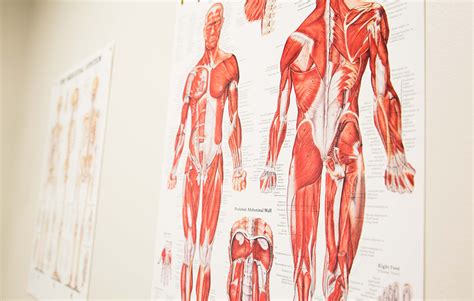Introduction

The field of exercise science is rapidly evolving, with advancements in technology and research unlocking new insights into the human body’s response to exercise. Aspiring exercise scientists are drawn to this dynamic discipline, seeking to understand the science behind physical activity and its myriad benefits. To excel in this field, formal education is paramount, and choosing the right exercise science school is crucial.
Top Exercise Science Schools
Here’s a comprehensive list of renowned exercise science schools that offer exceptional educational programs:
1. University of Massachusetts Amherst
– Consistently ranked among the top exercise science schools in the US
– Offers undergraduate and graduate programs, including a PhD in Kinesiology
2. Auburn University
– Home to the College of Education, Kinesiology and Exercise Science
– Provides a strong foundation in exercise physiology, biomechanics, and motor control
3. San Diego State University
– Boasts a state-of-the-art fitness and human performance lab
– Offers a Bachelor’s of Science in Exercise Science emphasizing integrative health
4. University of North Carolina at Chapel Hill
– Renowned for its Department of Exercise and Sport Science
– Conducts cutting-edge research in athletic performance, health promotion, and injury prevention
5. University of Texas at Austin
– Features the Department of Kinesiology and Health Education
– Offers specialized tracks in exercise physiology, biomechanics, and motor behavior
6. University of Georgia
– Home to the Department of Kinesiology
– Provides a unique blend of theoretical and applied courses in exercise science
7. University of Washington
– Boasts a world-class Department of Kinesiology
– Focuses on interdisciplinary research in biomechanics, exercise physiology, and nutrition
8. University of California, Berkeley
– Renowned for its Department of Nutritional Sciences and Toxicology
– Offers a comprehensive undergraduate program in exercise nutrition
9. University of Southern California
– Features the Department of Kinesiology
– Conducts groundbreaking research in exercise physiology, biomechanics, and motor control
10. University of Pittsburgh
– Home to the Department of Health and Physical Activity
– Provides a strong emphasis on applied exercise science and health promotion
Factors to Consider When Choosing a School
When selecting an exercise science school, several factors should be considered, including:
- Faculty expertise: Look for schools with faculty actively engaged in research and publication in the field.
- Program reputation: Research the reputation of the program and its graduates’ success in the field.
- Lab and research opportunities: Choose schools with well-equipped labs and ample opportunities for undergraduate research involvement.
- Career services: Consider schools that offer career counseling, job placement assistance, and professional development opportunities.
Industries and Career Paths
Exercise science graduates pursue diverse career paths in various industries, including:
- Health and Wellness: Health coaches, fitness trainers, rehabilitation specialists
- Fitness and Sports: Strength and conditioning coaches, sports scientists, athletic trainers
- Academia: Exercise scientists, researchers, professors
- Workplace Wellness: Corporate fitness managers, employee wellness specialists
- Government: Public health professionals, policy advisors
Table 1: Exercise Science Discipline Highlights
| Discipline | Focus | Related Careers |
|---|---|---|
| Exercise Physiology | Body’s physiological responses to exercise | Fitness trainers, health coaches |
| Biomechanics | Mechanical analysis of human movement | Strength and conditioning coaches, sports scientists |
| Motor Control | Neural coordination and movement patterns | Rehabilitation specialists, athletic trainers |
| Exercise Nutrition | Role of nutrition in exercise performance and recovery | Registered dietitians, corporate fitness managers |
Effective Strategies for Exercise Scientists
To succeed as an exercise scientist, consider these strategies:
- Stay up-to-date with research: Read scientific literature, attend conferences, and engage in professional development.
- Develop strong communication skills: Effectively conveying complex scientific concepts is essential in this field.
- Cultivate a collaborative mindset: Collaborating with other professionals in healthcare, fitness, and research can enhance your knowledge and impact.
- Embrace technology: Utilize technological advancements in exercise science, such as wearable devices and data analysis software.
- Foster a passion for the field: Exercise science is a rewarding profession, so stay enthusiastic about the science of human movement.
Table 2: Tips and Tricks for Exercise Science Students
| Tips | Tricks |
|---|---|
| Manage your time effectively | Create a study schedule and stick to it |
| Join a study group | Collaborate with classmates to review material |
| Attend office hours | Clarify concepts with professors |
| Utilize online resources | Explore websites and apps for additional learning |
| Network with professionals | Attend industry events and connect with potential employers |
Table 3: How to Become a Successful Exercise Scientist
| Step | Description |
|---|---|
| 1. Earn a bachelor’s degree in exercise science | Choose a reputable program to build a strong academic foundation |
| 2. Gain hands-on experience | Participate in internships, volunteerism, or research projects to apply your knowledge practically |
| 3. Consider graduate education | Pursue a master’s or doctoral degree to specialize in a specific area or advance your career opportunities |
| 4. Obtain certifications | Enhance your credibility with professional certifications in exercise science, fitness training, or related fields |
| 5. Stay involved in research | Engage in ongoing research to stay abreast of advancements and contribute to the field |
Table 4: Innovative Applications of Exercise Science
| Innovation | Description | Potential Implications |
|---|---|---|
| Wearable technology | Track fitness metrics, guide exercise programs, and monitor health | Personalized fitness plans, improved injury prevention |
| Artificial intelligence | Analyze movement patterns, optimize training, and predict injury risk | Enhanced coaching, personalized rehabilitation |
| Virtual reality | Create immersive exercise environments, improve motivation, and reduce perceived exertion | Rehabilitation programs, sports training |
| Precision exercise | Tailor exercise interventions based on individual genetics, biome |
